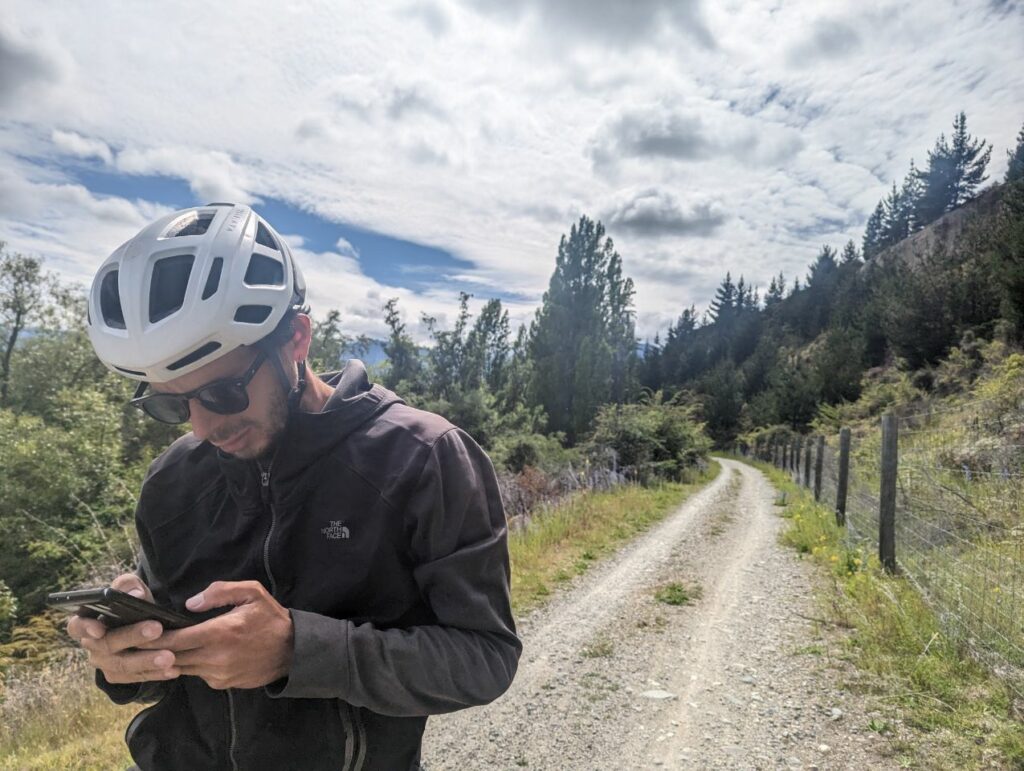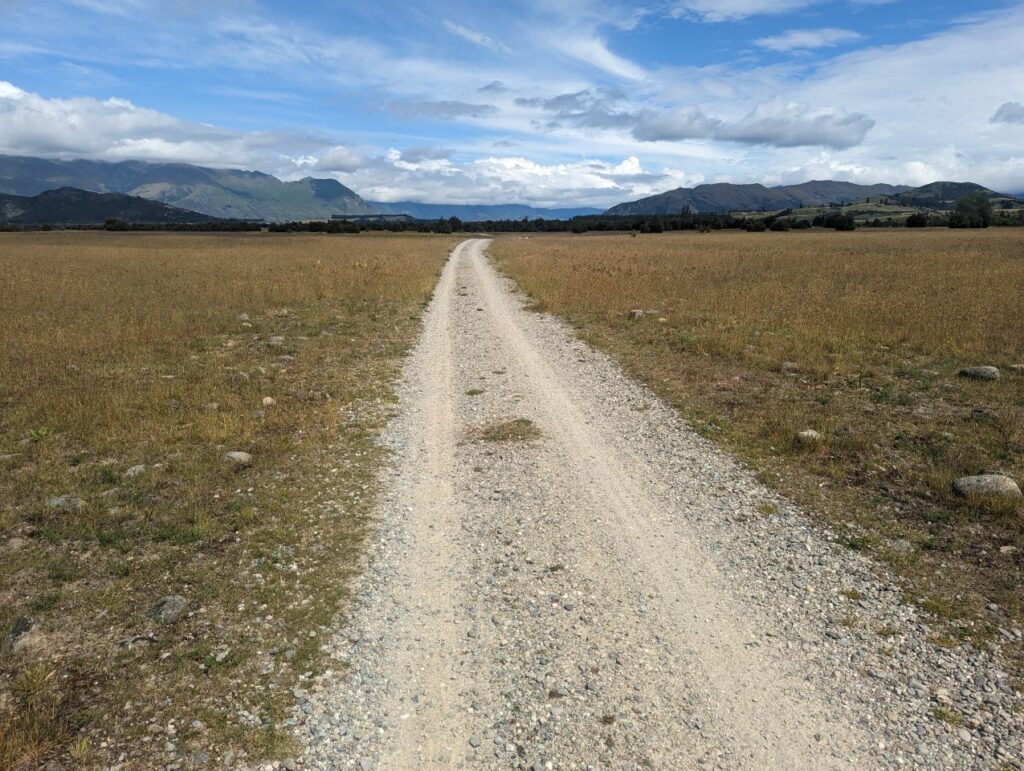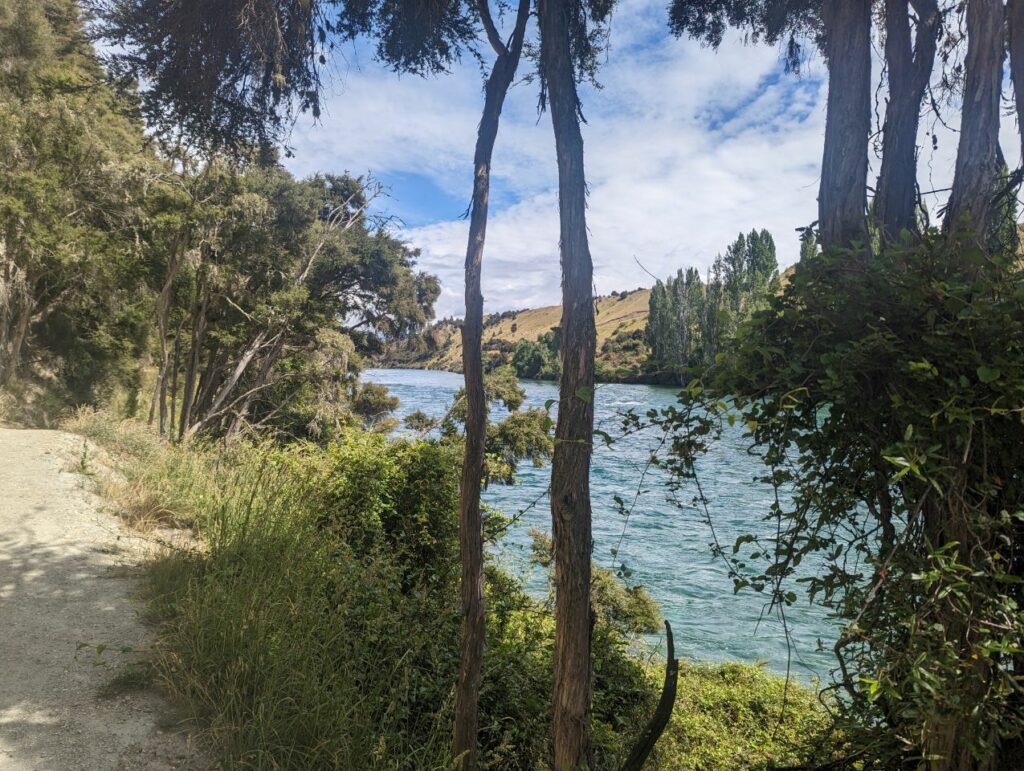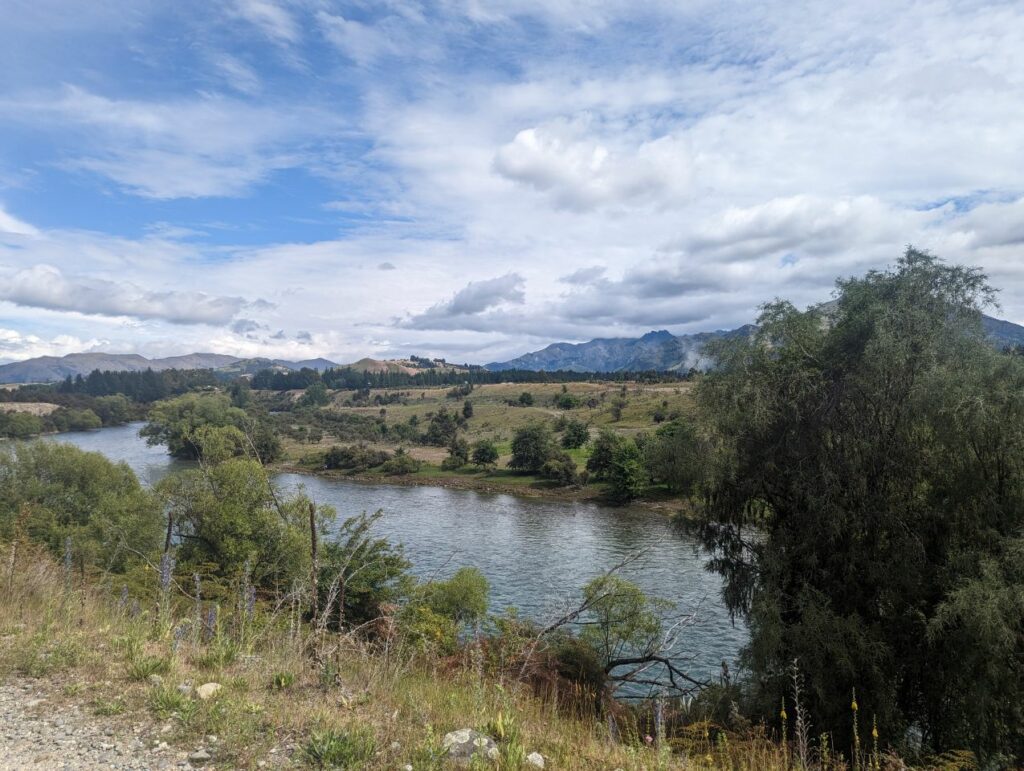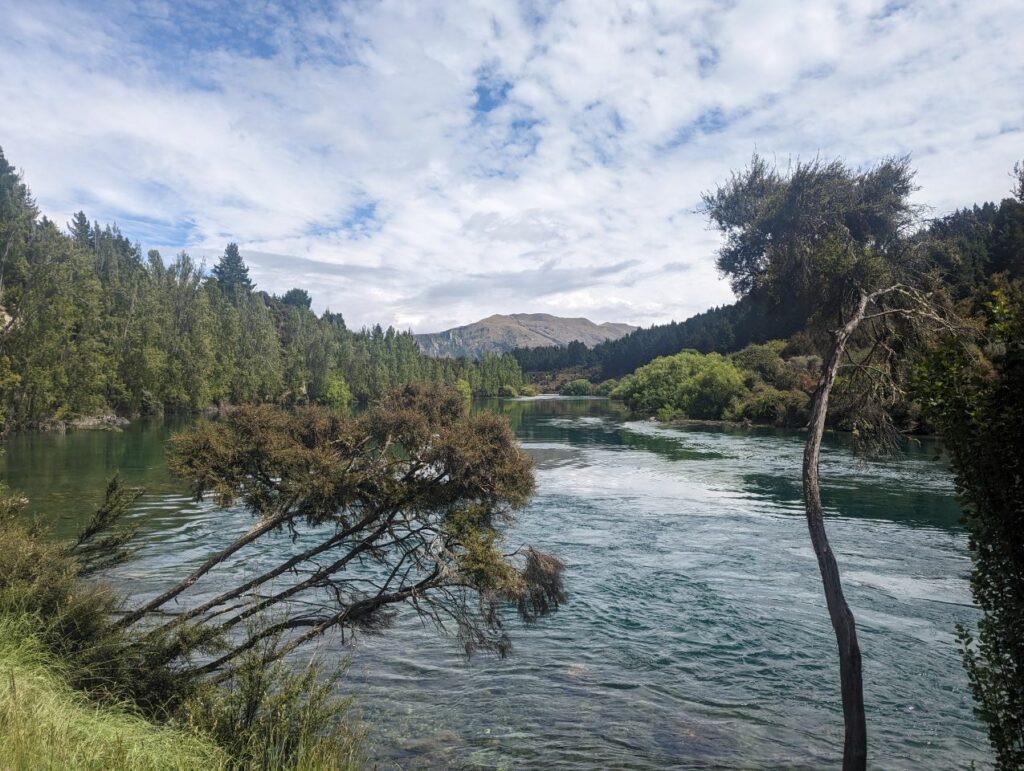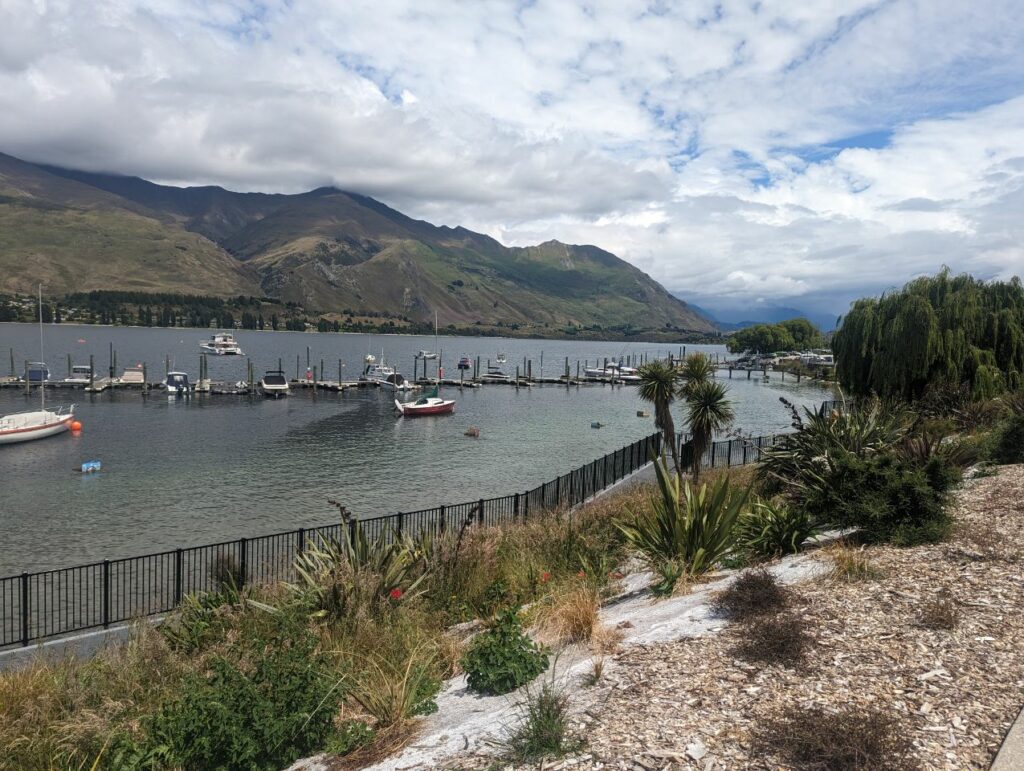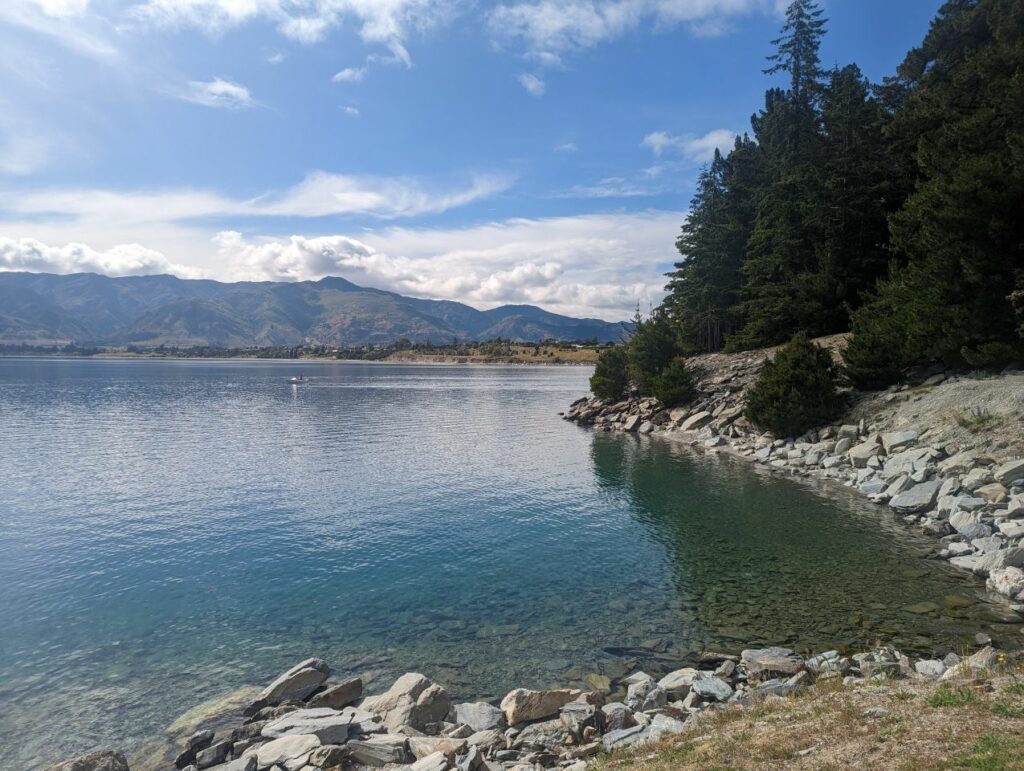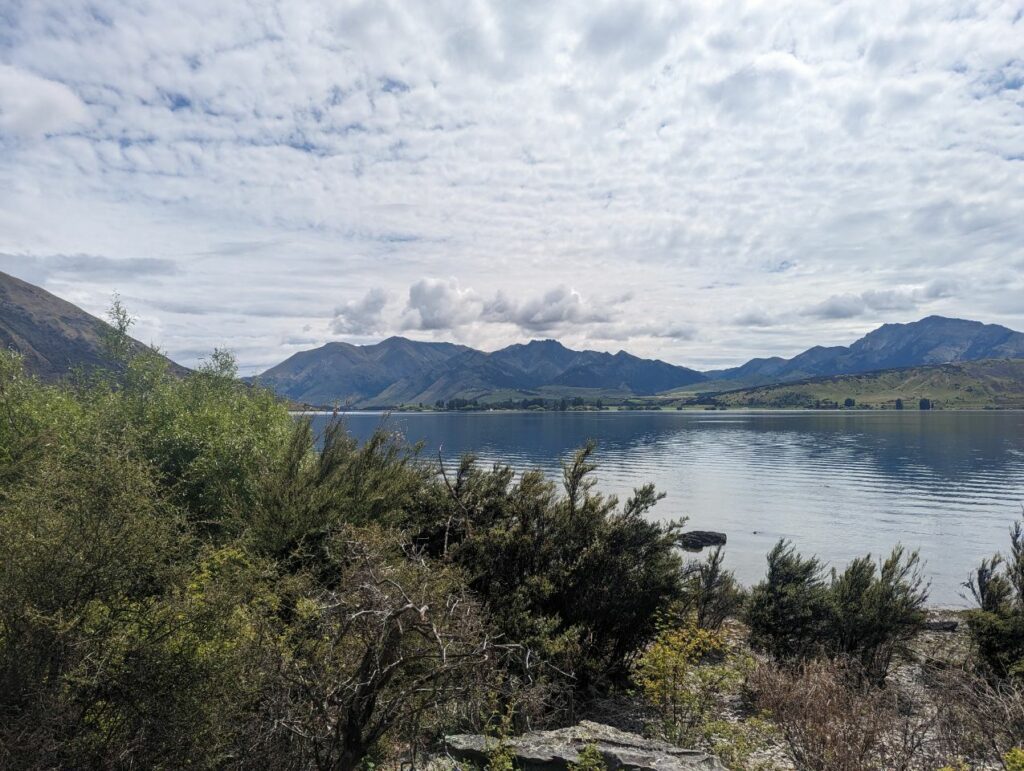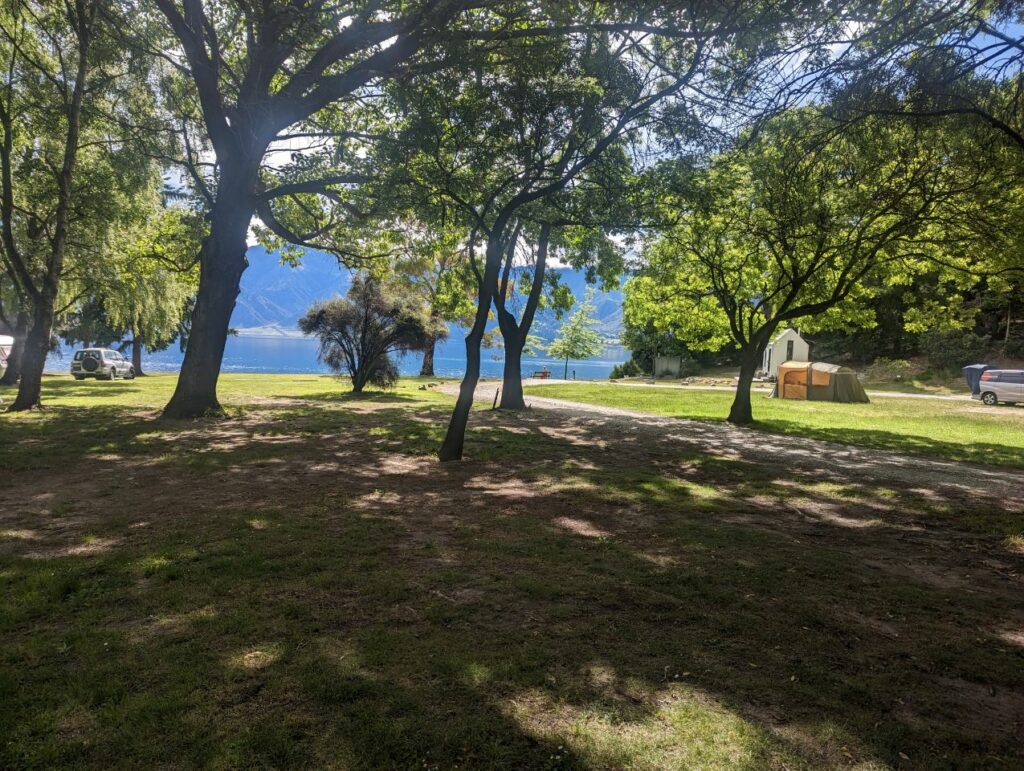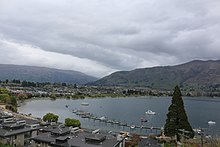Malgré la défaite de la France qu’on a regardé à 4 h du matin, on arrive à Wanaka un peu fatigués !!
On est arrivée bien plus tôt que prévu car on passe Noel ici
Mais on va en profiter pour faire quelques rando dans les alentours et d’autres activités
La route était encore incroyable aujourd’hui, on a pris des routes pour VTT comme on avait plus le temps
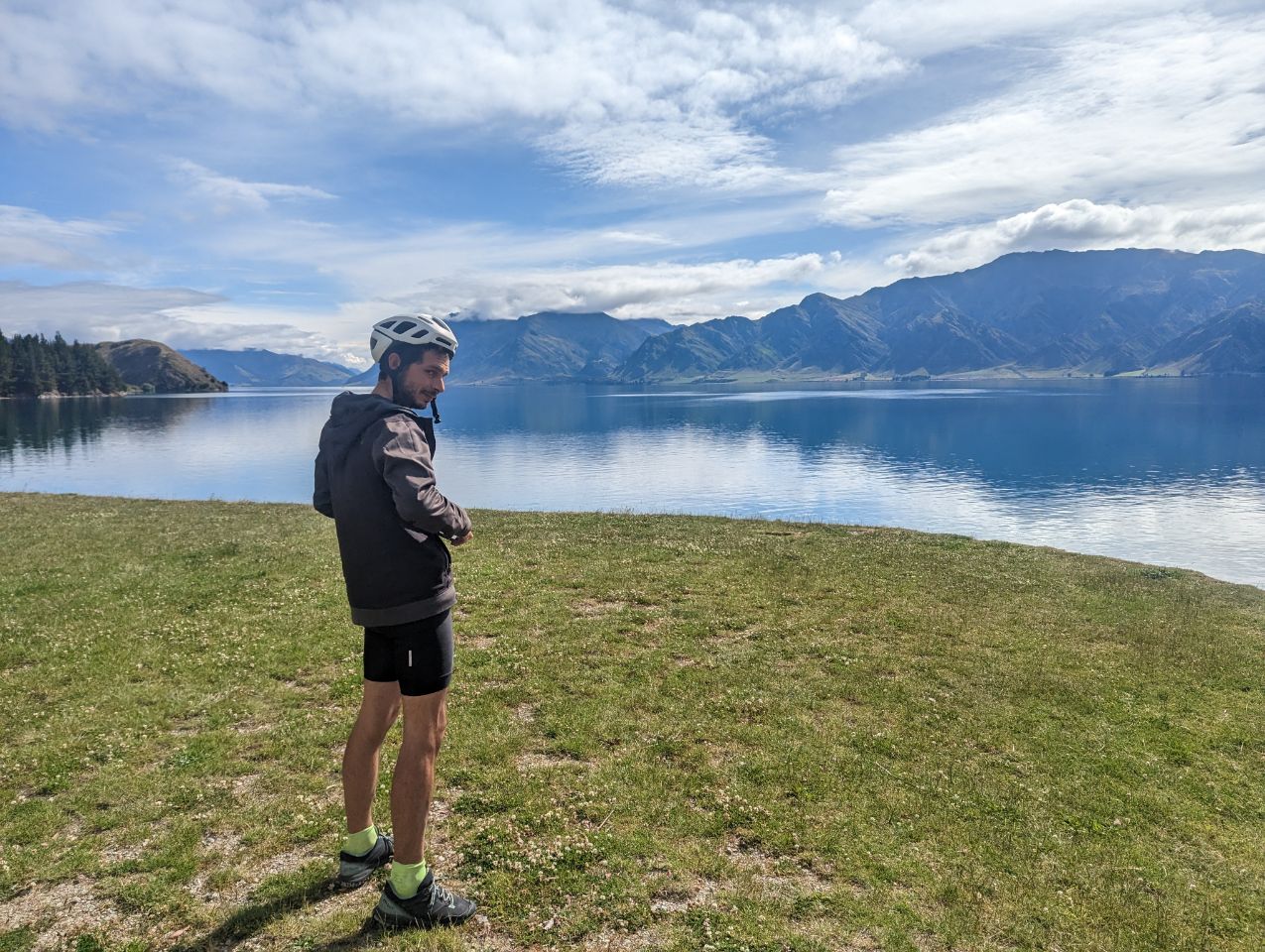
WANAKA 1
19 Decembre 2022
Wānaka (Māori pronunciation: [ˈwaːnaka])[3] is a popular ski and summer resort town in the Otago region of the South Island of New Zealand. At the southern end of Lake Wānaka, it is at the start of the Clutha River/Mata-Au and is the gateway to Mount Aspiring National Park.
Wānaka is primarily a resort town with both summer and winter seasons. Its economy is based on the many outdoor opportunities this offers.
Historically, Māori visited the Wānaka area to hunt and fish in summer, or on their way to seek pounamu (greenstone) on the West Coast. Ngāi Tahu abandoned their seasonal camps after a raid by a North Island war party in 1836.
The current town was founded as Pembroke during the gold rush of the 19th century, and renamed to Wanaka in 1940.[4] Along with the rest of the Queenstown-Lakes District, Wānaka is growing rapidly, with the population increasing by 50% between 2005 and 2015.
Names
Wānaka is the South Island dialect pronunciation of wānanga, which means ‘sacred knowledge or a place of learning’.[5] The New Zealand Gazetteer cites the meaning as « the lore of the tohunga or priest ».[6]
While the name could also be a variation of Ō-Anake or Ō-Anaka, a proper name,[5] Ngāi Tahu’s atlas Ka Huru Manu dismisses this variation as a simple spelling mistake.[7]
A Kāti Māmoe settlement at the site of modern Wānaka was Para karehu[8] or Parakārehu.[9] Take Kārara was a Kai Tahu kāinga nohoanga (settlement) at the southern end of Lake Wānaka, including Ruby Island.[9]
The town was named Wanaka when it was first surveyed in 1863, but renamed Pembroke within a month of the surveyor returning his books to Dunedin. Pembroke was the family name of the Hon Sydney Herbert,[10] a UK Cabinet Minister and member of the Canterbury Association.
The town’s name reverted to Wanaka on 1 September 1940 to reduce confusion between the names of the town and the lake.[10] The official name of the lake was updated from Lake Wanaka to Lake Wānaka in 2019,[6] and the town to Wānaka in 2021.[11]
History
A Kāti Māmoe settlement at the site of modern Wānaka was named Para karehu.[8]
The area was invaded by the Ngāi Tahu in the early 18th century.[8] Ngai Tahu visited annually, seeking greenstone in the mountains above the Haast River and hunting eels and birds over summer, then returning to the east coast by descending the Mata-Au in reed boats called mōkihi.[12][13] Their settlement Take Kārara included a pā and a kāinga mahinga kai (food-gathering site) where pora (‘Māori turnip’), mahetau, tuna (eels), and weka were gathered.[9] Eels and birds were gathered at a lagoon Manuhaea on the Hāwea side of The Neck, which also supported gardens of potato and turnips.[14]
Ngāi Tahu use of the land was ended by attacks by North Island tribes. In 1836, the Ngāti Tama chief Te Puoho led a 100-person war party, armed with muskets, down the West Coast and over the Haast Pass. They fell on the Ngāi Tahu encampment between Lake Wānaka and Lake Hāwea, capturing ten people and killing and eating two children.[15] Some of the Ngāi Tahu fled down the Waitaki river to the coast. Te Puoho took his captives over the Crown Range to Lake Wakatipu and thence to Southland where he was killed and his war party destroyed by the southern Ngāi Tahu leader Tuhawaiki.[16]
The first European to visit the area was Nathaniel Chalmers, who was guided inland by Chiefs Reko and Kaikoura in 1853.[17] Reko and Kaikoura showed Chalmers the rock bridge Whatatorere at Roaring Meg, which was the only place that the Kawarau River could be jumped over,[18] and returned him down the Clutha in a mōkihi reed boat.
European settlement began in the Upper Clutha River Valley in the 1850s, with the establishment of sheep stations by runholders. The first station was at Albert Town, the only place where settlers could ford the Clutha River. The present site of Wānaka was first surveyed in 1863.[4] Gold was discovered in the nearby Cardrona valley in 1862 with many joining the gold rush.[19] Settlement increased in Pembroke during the 1870s because of timber milling in the Matukituki Valley that used Lake Wānaka for transport.
Mass tourism began in 1867 when Theodore Russell opened the first hotel, and with the world’s first sheepdog trials.[20] The first school in the area was opened in Albert Town in 1868.[19] and the Pembroke post office opened in 1873. The Pembroke school opened in 1880 which became the Wanaka District High School in 1940. In 1885 the Commercial Hotel opened in Pembroke and in 1887 the Wanaka Library opened on Ardmore Street. In 1922, the First Wānaka Hotel was destroyed by fire. The following year it was rebuilt as the Wanaka Public Hall. In 1940 Wānaka was connected to the national electricity grid.[19]
Wānaka proved a very popular tourist destination because of its borderline continental climate and easy access to snow and water.[21] With the development of Treble Cone (1968) and Cardrona ski fields (1980), Wānaka grew in popularity as a winter destination.[22]
Resource consent was approved for a film studio development in 2021. The film studio is expected to cost $280 million and will include up to 10 sound stages, an 11 hectare lake, an Italian village and replicas of parts of Venice, Paris and New York City.[23][24][25][26]
In late 2021, Wānaka became home to the smallest Countdown supermarket in New Zealand. It will provide increased competition in the supermarket trade for Wānaka.[27]

